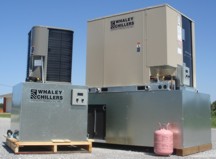Spray Quenching
Quenching techniques come in a variety of ways, as well as the mediums used. Spray quenching can use oil, brine, air, or water quenching techniques. Some spray techniques use a combination of these mediums. Spray quenching provides great control of cooling rates applicable to different sections of materials being quenched. Cooling rates are variable based upon nozzle surface, medium flow mass and pressure being applied to the medium. The design of the spray quenching equipment is also crucial to the cooling rate. Spray patterns are either circular or elliptical.
Flush quenching, another name for spray quenching, must be monitored constantly, and taken care of properly. The spray quenching system can include nozzle type, nozzles size, placement of nozzle, pressure of spray, and water temperature. The droplets of water or water/air streams allow the structure to cool the material quickly. Because the liquid streams through the holes in the surface of the nozzle, build up can occur. The clogging can occur over time, and the material being cooled may not be used in the targeted industry due to inadequacies found in the material. The material may be weak, or have holes and cannot be used.
There are benefits to spray quenching. Spray quenching can allow for a lower cost and lower alloy content steel. Spray quenching also does not produce a vapor bath seen in still- bath quenching. The vapor admitted in still-bath cools slowly and increase the crystal size in the material being cooled. The larger the crystal the more possible for cracks and fissures, which makes the material weak.
Whaley Products
 Packaged Chillers Non-expandable (integrated pump tank) 1.5Ton – 20Ton Single / Dual Circuits Single / Dual Pumps |
 SAE Series Modular Chillers Expandable (pump & tank on separate skid) 1.5Ton – 200Ton Single / Dual Circuits |
 SAR Series Split Chillers Expandable (Outdoor Condensing Unit) (pump, tank, evaporator on indoor skid) 1.5Ton – 200Ton Single / Dual Circuits |


